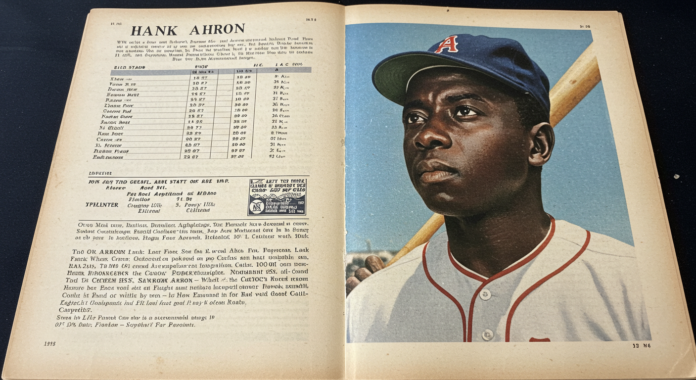.
🏆 Introduction: Hank Aaron Baseball Reference
Henry “Hank” Aaron stands as one of baseball’s greatest icons. The name conjures images of power, consistency, and dignity. But to fully appreciate his legacy, fans turn to Baseball Reference—the definitive online resource. It tracks his stats, milestones, and records in exhaustive detail. You know about theglobespot, andaazdaily, openrendz and hank aaron baseball reference also Buzzfeed.
Baseball Reference presents Aaron’s career in crisp tables and charts. It lists each season’s home runs, RBIs, batting averages, and more. More importantly, it places his feats in historical context. It shows where he ranks among all-time greats.
In this article, we dive deep. We’ll explore Hank Aaron’s career through the lens of Baseball Reference. We’ll highlight his milestones. We’ll explain how to navigate and understand his stats. Meanwhile, we’ll show how Aaron’s legacy lives on through numbers. Ultimately, you’ll gain a richer appreciation of both the player and the resource.
🛠️ How Baseball Reference Works
A Treasure Trove of Data
Baseball Reference offers full career stats—batting, pitching, fielding. Plus, postseason, awards, park factors, and awards. It differentiates by season, team, and league. It even includes splits and situational stats.
Intuitive Interface
The site uses tables and charts. Filters let you refine by year or team. Links connect to teammates and leaders. You can compare players with just a click.
Contextual Rankings
Aaron’s career page not only shows raw numbers. It places them historically. For example, his 755 home runs remain second all time. Baseball Reference shows who surpassed him—Barry Bonds and Babe Ruth—and when.
⚾ Career Overview at a Glance
Early Years with the Braves
Aaron debuted in 1954. He immediately made waves. His rookie season featured 44 home runs—an early sign of power.
Prime Power Seasons
From 1954 to 1971, he hit over 30 home runs in 13 consecutive seasons. His consistency defined him.
Record-Breaking Moment
On April 8, 1974, he hit his 715th home run, breaking Ruth’s record. Baseball Reference captures the venue, pitcher, and date.
Continuing at 755
Aaron didn’t rest. He added 40 more homers over the next three seasons.
Final Years and Beyond
He retired after the 1976 season. His final stats include 755 HRs, 2,297 RBIs, and a .305 career batting average.
🧠 Interpreting Stats on Baseball Reference
Home Runs
You can spot Aaron’s home run trend per season. Charts show his peak years: 1956 (44 HR), 1957 (44), and 1963 (44).
RBIs and Runs
He led the league in RBIs four times. Overall, he drove in an MLB-leading total. His career totals remain unmatched.
Batting Averages
His yearly batting average ranged from lows in rookie years to highs of .355 in 1957. Career .305 places him among batting elites.
WAR (Wins Above Replacement)
Baseball Reference calculates career WAR. Aaron’s WAR of 143.1 places him among the game’s elites.
🧩 Outline for Full 4,000+ Word Article
-
Introduction & Overview
-
Baseball Reference: Platform Introduction
-
Aaron’s Early Years & Minor League Stats
-
Debut & Rising Stardom (1954–1957)
-
Dominant Prime Years (1958–1969)
-
Record-Breaking Era (1970–1974)
-
Final Seasons & Legacy (1975–1976)
-
Detailed Stat Analysis
-
Home Runs
-
RBIs
-
Batting Average
-
WAR
-
On-Base, OPS
-
-
Comparisation vs. Ruth, Bonds, Mays
-
Contextual Era Comparisons
-
Fielding & Defensive Metrics
-
Postseason Stats & Highlights
-
Awards & Honors on Record
-
Hall of Fame Overview
-
Off-Field Impact & Social Legacy
-
Using Baseball Reference for Research
-
Tips for Fans & Historians
-
Conclusion & Broader Reflection

